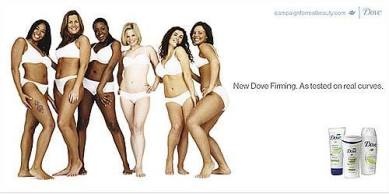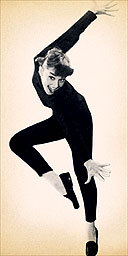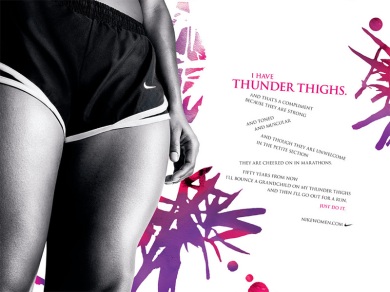Before me two ads are presented for Kotex napkins. Both emphasize the protection, and “safety” that pads are supposed to give a woman; but the two convey the message in two different ways. Let’s examine the historical context fueling the aesthetics of the ads in order to conclude how and why their marketing methods are so different.
The first black and white cartoon ad probably was published during the 1950s. The caricatures certainly convey the “perfect life” idea that was stamped into the brains of the American citizens of that era. A country ready to bounce back from the upheaval that resulted from World War II attempted to erase its troubled past by making reputation and presentation the center goal. A prosperous image was consequently manufactured of a perfect family, wealthy life style, and flawless life. The ad strikes at this societal ideal by presenting four scenarios where there are a set of rules that are to be followed in order to preserve the quintessential image of this 50’s. So, what does a woman do when she finds herself “leaking” out her flaws (pardon my pun)? She must hide them of course and pretend they don’t exist with the ad’s self-proclaimed “poise-preserver” Kotex napkins; effective and logical perhaps, but slightly sick. Women don’t have periods, or cramps, or flaws in order for the rules to be properly followed in this ad. The marketers delve into this rich pool of societal conformist crap and sell it to the public. This is what Susan Douglass does to ads. She deconstructs them by determining what makes the method work. In other words what societal and historical context allows the aesthetic message to work so that the product is sold?
The second ad is a drawing as well, although slightly less “cartoonesque” than the first, of Cybill Sheperd, a prominent media figure during the 1960s. The ad is full of color and Sheperd is wearing a low-cut, sexy outfit. Along with the sexy undertone, Sheperd is surrounded by a swirling and possible drug-induced vision of a cloud. Yup, this definitely emphasizes the message of the Peace, Love and Harmony Era. Again, America during the 1960s was a response to the violent and seemingly pointless Vietnam era, where uninhibited sex flourished and drugs were repeatedly used. These antics were a rebellious (and fun) response to the senseless conflict abroad. Anything that felt good was condoned regardless of the consequences. The message of the ad “Be a question. Be an Answer. Be a beautiful story. But be sure,” embodies the mentality of the public during that time. Feel however you want, just accept whatever comes your way, but be sure to use Kotex napkins. Get rid of any worry in order to reach the ultimate hippy-like state. The marketers saw the negative reactions that the young public displayed towards the war and they banked on it. They went to town selling a product that would exploit a politically-favored message. Also, ignoring the political implications, let’s think about why else the hippy lifestyle was promoted. Who wouldn’t want to be able to participate in every vice known to man, after all its only human nature. Finally, society said it was alright to be promiscuous and to be quite literally “out of one’s mind” with the use of drugs.
Two very different ads selling the same product have different messages caused by the same problems. It’s fascinating to see that a response to a war could be so different just based on analyzing how the marketers chose to approach the campaigning of the product. One era embraced rules to create harmony, and the other era banished them. Both radical approaches have negative consequences, but both were very affective for advertising.





